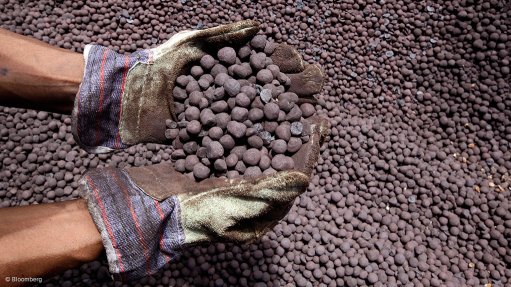Lab-grown diamonds set to fill projected deficit as mined production declines
JOHANNESBURG (miningweekly.com) – Technological developments that enable manufacturers to produce grown diamonds have presented the industry with a significant growth opportunity, with a noticeable influence on the economy and the diamond value chain, as researchers predict the demand for grown diamonds to double in the next ten years.
This is because, in addition to the jewellery industry, manufacturing and energy companies also use grown diamonds. Singapore-based grown diamonds manufacturer IIa Technologies (pronounced ‘2a Technologies) says this is a result of the projected decline of mined diamond supply, as the quality levels of mined diamonds are unpredictable for high-technology applications; further, almost all of the mined diamond production is absorbed by the gems and jewellery industry. Owing to this, grown diamonds are filling an important gap in the diamond industry as a new source of raw material.
Consulting firm Frost & Sullivan’s ‘Grown Diamond Impact 2050’ report, published last year, indicates that mined diamonds are a finite resource, considering the extreme and rare occurrence of the natural surroundings in which they are formed. Therefore, the sustainability of the mined diamond industry as a primary source for the industry is declining.
State of the Diamond Industry
Based on the Frost & Sullivan report, global mined diamond supply is estimated to drop to 13-million carats in 2050, from the projected 133-million carats in 2014. Further, despite the implementation of technological developments in mining exploration, rough diamond production looks bleak.
South African diamond miner De Beers estimates that more than 8 000 kimberlites have been found; however, only 67 of those kimberlites have enough diamonds to justify the economics of establishing a mine.
Globally, seven major mines were generating 65% of the world’s rough diamond production by value. Major diamond producers have, therefore, reduced exploration budgets, while junior exploration companies face increased difficulty in obtaining new finance, owing to kimberlite feasibility issues.
Frost & Sullivan further mentions in the report that only 3% of exploration budgets was allocated for diamond exploration in 2013, compared with 46% and 33% for the exploration of gold and base metals respectively.
Diamond exploration budgets, meanwhile, have been reduced to half of what it used to be in 2007 and 2008.
Nevertheless, Frost & Sullivan notes that, while mined diamonds supply is declining, demand is steadily rising. This is evident in the US – which represents the largest share of global jewellery sales – where there is consistent demand growth. The growing middle class in China and India has also driven demand in recent years, with leading retailers, such as Chow Tai Fook, in China, reporting 32% higher retail revenue over the 2014 Chinese New Year.
Frost & Sullivan predicts that this steady increase in demand is likely to lead to a shortage of about 248-million carats by 2050. The report also notes that China and Hong Kong are expected to register an 18% diamond jewellery sales increase by 2017.
About Grown Diamonds
US grown-diamond company Renaissance Diamonds Corporation CEO Neil Koppel describes grown diamonds as “chemically, optically and physically identical to mined diamonds”. He tells Mining Weekly that the only distinction between a mined diamond and a grown diamond is that a grown diamond comes from above the earth, whereas a natural or mined diamond comes from below the earth.
Additionally, global consulting firm Bain & Company’s ‘Global Diamond Report 2014’ highlights two broad categories of grown- diamond production technology – high- pressure high-temperature (HPHT) technology, which emerged in the 1950s, and chemical- vapour deposition (CVD) technology.
HPHT diamonds are mainly used as abrasives in the construction and manufacturing industries, while CVD diamonds are of a jewellery-quality size, colour and clarity, which makes it possible to customise the characteristics of individual diamonds using additives.
Bain & Company’s report indicates that, in 2013, grown-diamond producers produced about 7-billion carats of industrial diamonds, while natural diamonds accounted for less than 0.7-million carats of industrial diamonds in the same year.
Moreover, the construction industry uses between 60% and 65% of the world’s grown diamonds in cutting, grinding, drilling and polishing procedures, while manufacturers and energy companies use 15% to 20%, with high-tech applications accounting for 15% to 25%.
Companies in the industrial diamond market indicate that the prices for most industrial diamond powders range from $0.25 to $0.50 for each carat, while prices for high-quality CVD diamonds are much higher, as they can reach several thousand dollars for a single flawless stone.
Additional Technological Advances
IIA Technologies tells Mining Weekly that advances in CVD technology has presented the diamond industry with a significant opportunity, as it has allowed for the creation of large synthetic stones of jewellery-quality colour and clarity.
IIa Technologies believes that technological advancements in the grown-diamonds sector has necessitated the development of a sustainable, commercially viable diamond-growing process to truly explore the supermaterial-like qualities of diamonds.
“IIa diamonds are the purest grade of grown diamonds and are extremely rare in nature, as 2% of all diamonds in the world are type-IIa grade,” says IIa Technologies CEO Vishal Mehta.
He explains that the process of developing IIa-grade diamonds begins with diamond seeds – which are, in effect, natural diamonds – being placed inside a growth chamber, which is also known as the diamond greenhouse. There, a diamond-growing environment is conditioned and maintained for between 12 and 14 weeks.
Mehta points out that, at the end of this period, diamond seeds have undergone natural crystallisation – just as they do below the earth when they are mined, resulting in a rough-type IIa diamond being formed.
“The beauty of the IIa grown-diamond process is that we have developed this technology to culture only the rarest type-IIa diamonds, which are known to have the least amount of impurities and are extremely rare in the diamond industry,” he says.
Mehta indicates that the carbon emissions for mined diamonds are estimated at 57 000 g/ct, while those of grown diamonds are 0.028 g/ct.
Economic Outlook
Mehta believes that grown diamonds provide a solution to the expected decline in the supply of mined diamonds – which is likely to affect the diamond industry’s economy – as supply of high-quality grown diamonds is projected to grow steadily in years to come.
He notes that the global mined diamond industry employs more than ten-million people directly and indirectly. However, mining diamonds is more expensive, with mines literally having to dig deeper for the diamonds. This affects the whole industry – from the cutting and polishing to the retailing of natural diamonds.
Nevertheless, grown diamonds can also create a distinct employment roadmap for South Africa and, subsequently, impact positively on the local economy by creating high-value occupations and skills.
Mehta points out that the grown-diamond industry needs the same cutting and polishing skills currently available in the mined-diamond industry, along with next-generation skills of engineers and scientists.
Drawing data from last year’s statistics, Frost & Sullivan’s report indicates that the current scale of grown-diamond production is estimated to be about 360 000 ct. Production is estimated to reach almost two-million carats by 2018 and is expected to be more than 20-million carats by 2026.
The report also states that, in the next 30 years, grown diamonds will become a dominant player in high-technology applications and can prove to be a very significant source for the diamond jewellery industry.
Mehta says this will be an interesting move for the grown-diamond industry, as trends of accepting grown diamonds as a legitimate diamond product are emerging.
Comments
Press Office
Announcements
What's On
Subscribe to improve your user experience...
Option 1 (equivalent of R125 a month):
Receive a weekly copy of Creamer Media's Engineering News & Mining Weekly magazine
(print copy for those in South Africa and e-magazine for those outside of South Africa)
Receive daily email newsletters
Access to full search results
Access archive of magazine back copies
Access to Projects in Progress
Access to ONE Research Report of your choice in PDF format
Option 2 (equivalent of R375 a month):
All benefits from Option 1
PLUS
Access to Creamer Media's Research Channel Africa for ALL Research Reports, in PDF format, on various industrial and mining sectors
including Electricity; Water; Energy Transition; Hydrogen; Roads, Rail and Ports; Coal; Gold; Platinum; Battery Metals; etc.
Already a subscriber?
Forgotten your password?
Receive weekly copy of Creamer Media's Engineering News & Mining Weekly magazine (print copy for those in South Africa and e-magazine for those outside of South Africa)
➕
Recieve daily email newsletters
➕
Access to full search results
➕
Access archive of magazine back copies
➕
Access to Projects in Progress
➕
Access to ONE Research Report of your choice in PDF format
RESEARCH CHANNEL AFRICA
R4500 (equivalent of R375 a month)
SUBSCRIBEAll benefits from Option 1
➕
Access to Creamer Media's Research Channel Africa for ALL Research Reports on various industrial and mining sectors, in PDF format, including on:
Electricity
➕
Water
➕
Energy Transition
➕
Hydrogen
➕
Roads, Rail and Ports
➕
Coal
➕
Gold
➕
Platinum
➕
Battery Metals
➕
etc.
Receive all benefits from Option 1 or Option 2 delivered to numerous people at your company
➕
Multiple User names and Passwords for simultaneous log-ins
➕
Intranet integration access to all in your organisation





















